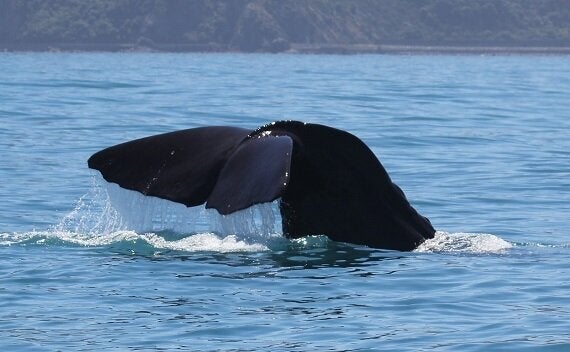There are few more distressing sights than the body of a dying whale being rolled around in powerful surf. Sadly, in the last few weeks, we have witnessed just this as a number of magnificent sperm whales have stranded on North Sea coasts. Not surprisingly, questions are being asked about why this happened, and also whether we could have helped them.
Dead, sick, injured or otherwise incapacitated whales and dolphins can be washed ashore and stormy weather can cause more bodies than usual to be cast up. So there is a normal background level of strandings and there are natural reasons why this might vary. Numbers of living whales and their distributions also affect stranding rates. Hence with populations (hopefully) recovering from whaling, the number coming ashore may increase, but climate change may also be affecting whale population distribution and therefore local stranding patterns.
Mass live strandings are especially perplexing. They defy our common sense but they are common in certain highly socially bonded species, including pilot and sperm whales. Out in the deep seas these whales live in schools and are highly dependent on each other to survive, collaborating, for example, to find prey and fend off predators. But once they are in trouble in shallow waters, the group continues to stick together despite the sometimes lethal consequences.

A large male sperm whale begins his deep dive (Photo: Mark Simmonds/HSI).
The natural habitat of sperm whales is the very deep seas. They have evolved to feed mainly on deep sea schooling squid and so descend to depths of a kilometre or more to find their prey. In Europe they are found to the North and West of the British Isles beyond the edge of the continental shelf and usually they are male, as the females stay further south. The southern North Sea is a totally alien habitat for them. They just don't belong there! It is shallow and soft-bottomed (which may confound their senses) with only a noisy, narrow and very shallow exit to the south via the English Channel. This is why sightings of large whales in the southern North Sea are often associated with their subsequent stranding.
Mass strandings of sperm whales in Europe are far from unique. However, the 29 reported so far is more than any previous mass stranding event. Perhaps more than one group entered the North Sea. This re-emphasises the need for a serious investigation. Whilst I have emphasised so far that strandings can be natural events, they can also be caused by human actions. The social bonding of some whale and dolphin species can be used to herd whole groups to shore and slaughter; a practice that sadly continues in the Faroes Island and Japan where noisy boats drive them in. Likewise loud noise and disturbance out at sea may push whales inshore and into trouble.
The UK is a world leader in whale pathology and the experts in the UK Cetacean [Whale and Dolphin] Strandings Programme (CSIP), which is supported by the UK government, are able to diagnose the reasons for many strandings. Thanks to their work and that of other inspired scientists, we now know that loud noise can also cause some species to surface so fast that bubbles form in their tissues in a condition akin to the 'bends' seen in human divers. In whales this can lead to live strandings and death.
Marine wildlife rescue in the UK is wholly managed by the voluntary sector and coordinated through a network of charities that include the British Divers Marine Life Rescue, the RSPCA and SSPCA. This network meets as the Marine Animal Rescue Coalition where effective rescue protocols, based on best veterinary advice, have been hammered out over the years. However, large stranded whales present very large problems and have been the focus of much discussion in recent years, including consultations with other experts around the world. Sadly, there are no simple answers. Typically they are too big to move without further injuring them and just the event of stranding rapidly causes irreparable internal damage. Furthermore, even if rescuers could have swiftly lifted one of the stranded sperm whales and returned him undamaged to the North Sea, he would still have been in the wrong place - an alien environment where there is no food and where he might again have simply re-stranded. Euthanasia options to help alleviate the suffering of large whales are also regularly reviewed. Again, at the moment, there are no viable options, mainly because their large size presents so many problems. However, the rescue network is continually reviewing its practices, learning from the pathology and other new science as it becomes available.
Meanwhile, we are well equipped in the UK to respond to the dolphins, porpoises and smaller whales that strand and we are working with others to expand rescue training to other parts of the world. If you encounter a stranded whale or dolphin please don't try to deal with the situation yourself - this can be dangerous for you and the animal (animals who are moved inappropriately can be fatally wounded), but do call in the experts!
